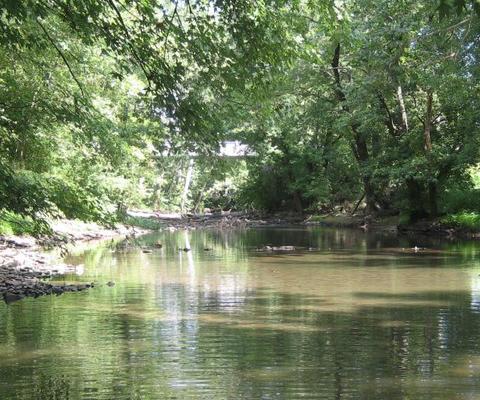Certified Backyard Stream Steward
Interested in becoming a Certified Backyard Stream Steward? This online course is comprised on 12 modules designed to help homeowners understand how to protect and manage their backyard streams. Learn how fundamental stream processes are related to channel shape, how stormwater impacts stream ecosystems, why stream beds and banks erode, what methods can protect and restore stream ecosystems, what permits are required to restore streams, how karst landscapes influence streams, and how to begin a watershed assessment.
Have questions or comments about backyard streams? Please reach out to Amanda Gumbert, Ph.D. (amanda.gumbert@uky.edu) and Lee Moser (lee.moser@uky.edu).
Featured Projects
Webinars
General Water Resources Information
- KYH2O Podcast
- UK Watershed Protection and Restoration YouTube Channel
- UK Turfgrass Science YouTube Channel
Challenges for Urban Streams
- The Urban Stream Syndrome: Current Knowledge and the Search for a Cure
- Sanitary Sewer Overflows: Risks and Homeowner Responsibilities (HENV-709)
- Desbordamientos de Alcantarillado Sanitario: Riesgos y Responsabilidades de los Propietarios (HENV-709s)
- Sanitary Sewer Overflows: Lexington, Kentucky Remedial Measures and Helpful Tips (HENV-710)
- Desbordamientos de Alcantarillado Sanitario: Lexington, Kentucky Medidas Correctivas y Consejos Útiles (HENV-710s)
Backyard Stream Basics
- Central Kentucky Backyard Stream Guide (ID-242)
- Living Along a KY Stream (IP-173)
- What is a Watershed? (HENV-204)
Fluvial Geomorphology
- River Dynamics, River Restoration
- River Meanders and Floodplains
- Simon’s Channel Evolution Model, "A Model of Channel Response in Disturbed Alluvial Channels"
- Emriver Straight Channel Simulation
- Remeandering of a Small Channelized Stream
- Introduction: Ecological and Physical Considerations for Stream Projects
Ecosystem Services
Streambank Erosion
Riparian Buffer Vegetation
- Planting along Your Stream, Pond, or Lake (HENV-202)
- Planting a Riparian Buffer (ID-185)
- Streamside Buffers Trifold
- LFUCG Plant by the Numbers
- Invasive Plant Removal/Control
Stream Restoration
Stormwater
- Stormwater (HENV-203)
- Reducing Stormwater Pollution (AEN-106)
- Keeping Trash Out of Streams (AEN-119)
- LFUCG Stormwater and Storm Sewer System
- Residential Stormwater Site Assessment (HENV-707)
- Alternative Pavement Options for Residential Stormwater Management (HENV-708)
Low Impact Development (LID)
- Managing Stormwater Using Low Impact Development (LID) (AEN-118)
- Permeable Pavement for Stormwater Management (AEN-108)
- Stormwater Wetlands (ID-215)
- Building a Rain Barrel (HENV-201)
- LFUCG Stormwater Management LID Guidelines
Permitting
- U.S. Army Corps of Engineers
- Kentucky Division of Water – Permitting
- LFUCG – New Development, Redevelopment, Construction, and Demolition Projects
Karst
- Groundwater Quality (AEN-120)
- Common Hazards in Karst Terrain (AEN-126)
- Kentucky Geological Survey (KGS)
- Kentucky is Karst County!
Watershed Assessment
Lexington-Fayette Urban County Government (LFUCG) Resources
Funding
Where to Find Native KY Plant Materials
- Dropseed Nursery
- Eartheim Native Plant Nursery
- Highland Moor Propagation and Cut Stem Nursery
- Ironweed Nursery
- Michler’s Gardens and Greenhouses
- Oakland Farm Trees (trees and shrubs):
- Roundstone Native Seed
- Springhouse Gardens
- University of Kentucky Horticulture Club: Contact Shari Dutton sdutton@uky.edu or hortclubuk@gmail.com
- Wild Ones
